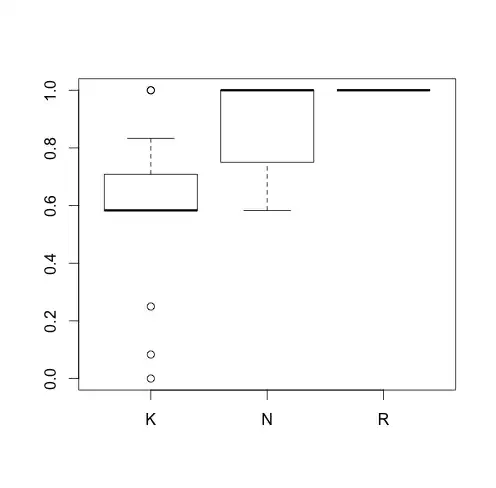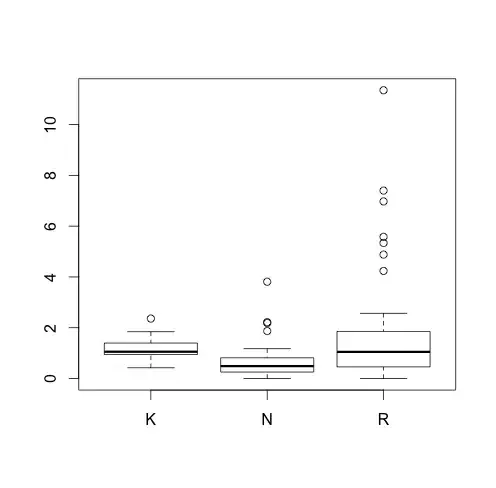(This section addresses the original question)
If we were looking for some relatively formal test, then speaking in general, if there's plenty of points outside the whisker ends, you could maybe get somewhere with a generalization of a two-sample Anderson-Darling type statistic, like so. Since the Anderson Darling approach focuses more on the tails than say a Kolmogorov-Smirnov, the differences in the tails might be sufficient.
However, I think in this case (since it now appears that you know $n$'s, not just lower bounds based on the tails) that you could perhaps also construct envelopes that put lower bounds on the difference in CDFs for a Kolmogorov-Smirnov type test. This could be generalized to a k-sample statistic.
This test would have low power typically, but when you lose most of the information in your data, that's how it goes.
Outside of formal testing:
In the case of direct comparison of boxes, Arnold et al (2011)[1] give a number of rules of thumb, some of which are both simple to apply and with reasonable properties (see p5 for a list of increasingly sophisticated rules). In many stats packages, notched boxplots are available and can be used.
[1]: Arnold P., Pfannkuch M., Wild CJ, Regan M, and Budgett S (2011),
"Enhancing Students' Inferential Reasoning: From Hands-On To 'Movies',"
Journal of Statistics Education, 19:2
pdf link

